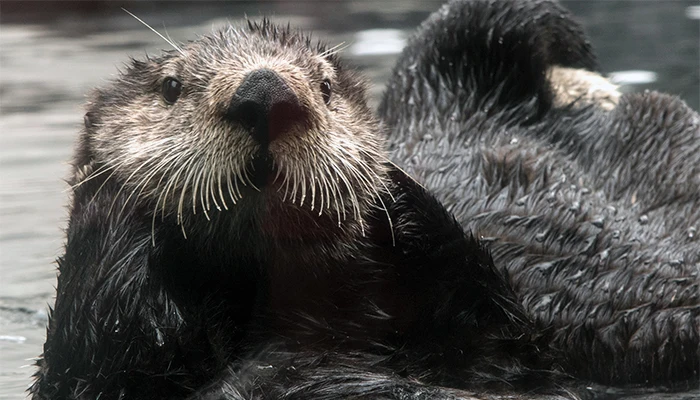


Understanding Marine Ecosystems
From hermit crabs to humans, all living things depend on the health of marine ecosystems. An ecosystem is an environmental community made up of many different species. The relationships between these species—from predators to prey to decomposers–form complex webs.
There are a variety of ecosystems in the ocean, from the kelp forests of the Salish Sea to the tropical coral reefs of the Indo-Pacific region.
Kelp, a brown seaweed, forms the foundation of many nearshore ecosystems in Washington’s waters. Kelp grows in underwater forests that provide food and habitat space for many marine species. Interestingly, kelp forests throughout the Pacific connect with each other to form “kelp highways.”
Organisms that have a large impact on their local environment are called keystone species. Examples of local keystone species include salmon and sea otters. Salmon provide food for many species and help cycle aquatic nutrients. Through their hunting and dietary habits, sea otters ensure that there is not an overabundance of grazer species, like urchins.


Threats to marine ecosystems
Because of the interconnectedness of ecosystems, threats to any single species can upset the overall local balance.
Marine ecosystems face a variety of challenges. Climate change, warming ocean temperatures, microplastics, marine debris, overfishing and chemical pollution are some of the largest threats to ocean health.
Some local animals face particular issues.
Kelp is vulnerable to changes in water temperature. Rising ocean temperatures can leave kelp vulnerable to other environmental stressors. A decline in certain marine predator species, like sea otters, can lead to an overabundance of species that graze on kelp.
Salmon need clean water in order to thrive. But pollutants and hazardous chemicals sometimes enter waterways via storm runoffs. Salmon that pass through urban waterways—including those in the Cedar River south of Seattle—are particularly vulnerable.
You (and your community) can help!
Humans are one of the main factors impacting ocean health. That means we have a responsibility to impact it for the better.
The ocean and its many ecosystems need your help now more than ever. Personal changes can make a big difference—and that impact grows when you get your family, friends and neighbors involved. Talking to people about the importance of marine health is a great way to start.

To help sea otters:
Keeping plastic and other trash out of the ocean ensures that sea otters have a healthy environment to live and hunt in. Make sure to properly dispose of your trash. You can also cut back on your plastic consumption by choosing reusable options whenever possible.

To help salmon:
Salmon are negatively affected by some of the chemicals in car tires, so try carpooling or taking public transit. You can also avoid or reduce the use of fertilizers in your yard and take your car to a commercial car wash. These practices help keep chemicals out of waterways.
Learn more about urban salmon in “Stories from the Salish Sea.”

To help kelp:
Purchasing sustainably sourced seafood is a great way to help kelp. Sustainable seafood producers use methods that do not disturb the seafloor or essential fish habitats, like kelp. You can also visit a beach with friends and family to look for kelp that has washed ashore. A trip to the shore is a great time to talk with others about the importance of kelp.
Learn more about the kelp highway in “Stories from the Salish Sea.”

To help ocean health:
From volunteering to contacting legislators, there are many ways we can come together to protect marine health.


